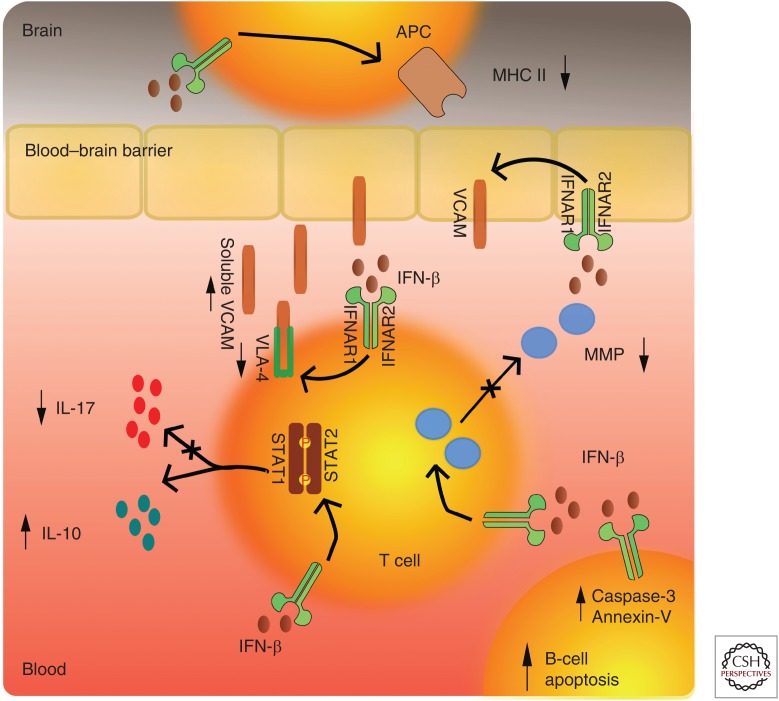Figure 1.
Molecular mechanisms of action of interferon β (IFN-β). Decrease of cellular expression of adhesion molecules (VLA-4) and cleavage of endothelial vascular cell adhesion protein (VCAM) results in decrease in cell sequestration through the blood–brain barrier. Additional decrease of matrix metalloproteinase (MMP) diminishes the ability for lymphocyte penetration. Activation of IFNAR1/2 receptors results in phosphorylation of signal transducers and activators of transcription (STAT)1-STAT2 factors that further results in secretion of anti-inflammatory cytokine profiles. Activation of IFNAR1/2 also results in decrease of major histocompatibility complex II (MHC II) expression and diminishes lymphocyte activation. IFN-β also increases apoptotic markers like Annexin-V and active caspase-3 via Fas-receptor/transmembrane activator and CAML interactor (TACI) signaling, resulting in specific depletion of memory B cells. IL, Interleukin.

